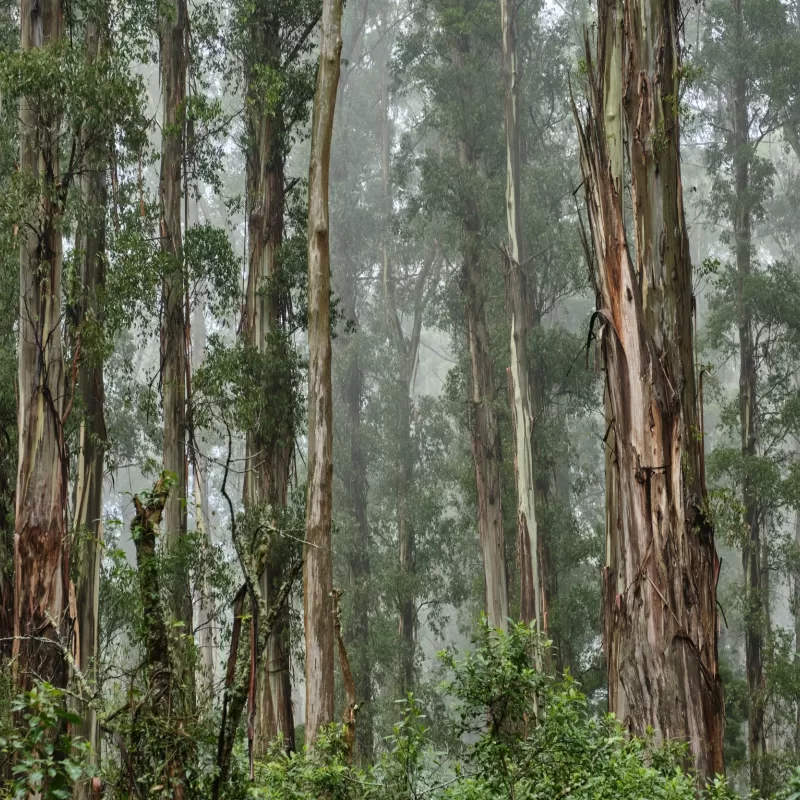| Height |
100.0m (10000cm) |
| Flowers |
Often 2 umbels together in an axil, each with 7-16 flowers. |
| Fruit |
Woody capsule |
| Form |
Tree with a shaft-like trunk which, in mature tees, is buttressed at the base. |
| Municipalities |
Break O'Day; Brighton; Burnie; Central Coast; Central Highlands; Circular Head; Derwent Valley; Devonport; Dorset; Georgetown; Glamorgan-Spring Bay; Glenorchy; Hobart; Huon Valley; Kentish; Kingborough; Latrobe; Launceston; Meander Valley; Northern Midlands; Sorell; Southern Midlands; Tasman; Waratah-Wynyard; West Tamar |
| Communities |
Wet Eucalypt |
| Habitat Notes |
Found on well-drained sites with moderate ferility and high rainfall, usually in sheltered valleys in the south and central plateau but not on the west coast. |
| Site Tolerance |
Moist |
| Frost Tolerance |
Tender |
| Soil Tolerance |
Clay; Fertile; Loam; Well-drained |
| General Notes |
Fast growing. The tallest known flowering plant in the world. An important source of timber marketed as 'Tasmanian Oak'; also used extensively as a raw material for newsprint pulp. Also suitable for firewood. Will not coppice after damage by fire or after felling. Not suitable below powerlines. |


